A Day In the Life of A Graphic Designer
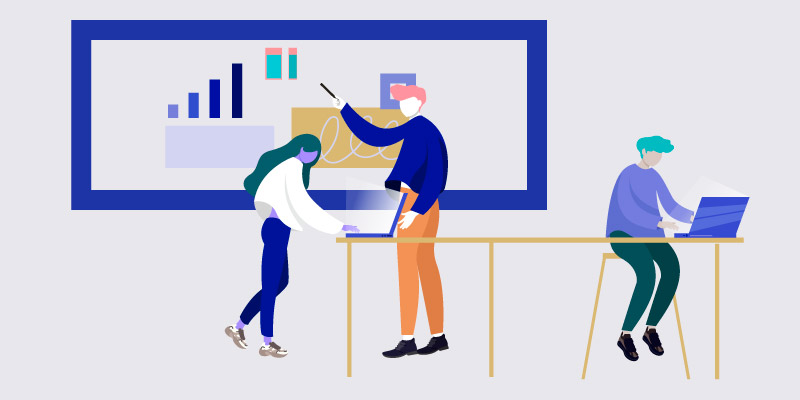
Featured Image: iStock/Polina Kacharaba
Have you ever wondered what a day in the life of a graphic designer looks like? Whether you hope to become a graphic designer yourself one day or are simply interested in learning how a designer spends their day, this blog is for you. It is commonly believed that the experience of graphic designers is limited to creating and designing logos.
But in reality, their work is centered on visual communication of different kinds ranging from designing logos to websites to animations and much more. The purpose of their work is to communicate ideas and knowledge to an audience by sight. Let’s break down a graphic designer’s day and take a look into their lives.
Daily Team Standup
A standup is a daily meeting held by many companies to discuss the status of everyone’s work and responsibilities for the day. Project deadlines and client issues are also discussed in this meeting and everyone is briefed on the changes that they may need to make in their work. It helps bring the team together to discuss any issues they may have and start the day right by planning out collaborative tasks beforehand.
The daily work life of graphic designers also begins with this meeting as they contribute to it with their suggestions and receive instructions about the work they need to complete for the day. In case these meetings are canceled or are not part of a company’s daily schedule, the graphic designer is required to keep track of their responsibilities on their own and report back to their manager timely. Whenever there is a graphic designer for hire, they are generally informed about their daily duties during the recruitment process only.
Reviewing Client Brief
Graphic designers perform many important duties and tasks daily to complete their projects. They tend to create banners, infographics, websites, game interfaces, album covers, logos, posters, and much more depending on the type of company they work in. They start by reviewing the client brief that is provided to them. This helps them understand what the client wants from them and develop the vision and strategy of the given design project.
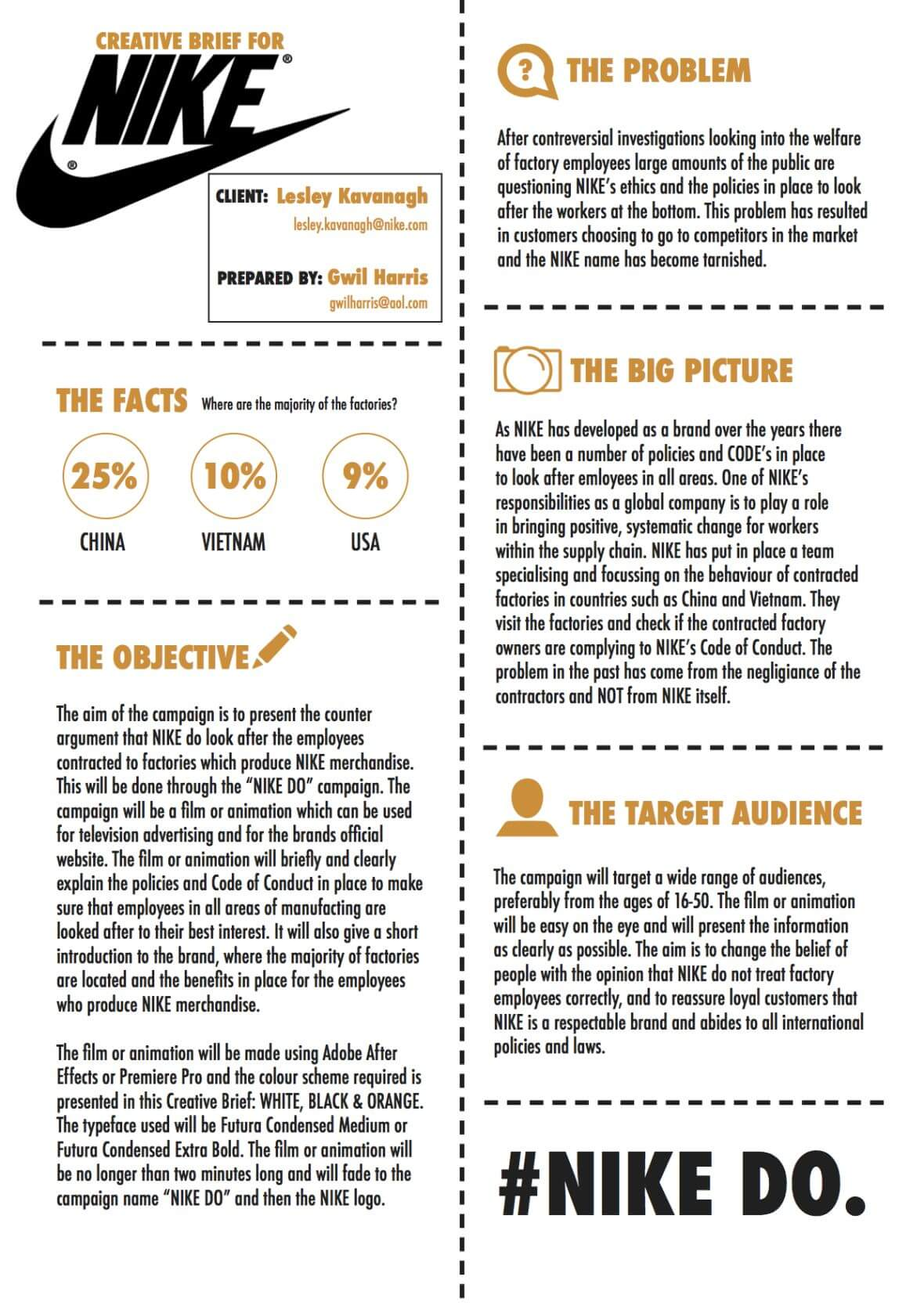
Image Source: blog.hubspot.es
Take a look at the example given above to see how a typical client brief appears. It also holds information about the message they need to convey in the project and the audience that they are targeting. Now, when a designer is developing a book cover, for instance, they will be guided about the theme of the cover and the color palette that the client wishes to incorporate into it. Similarly, for visual branding and marketing, professionals will follow the brief given by the company.
Market Research
Market research is the second step in their daily work. A graphic designer must research what the competitors are doing to be able to understand what kinds of designs are already out there and which designs work well or which do not work well.
For example, the designer for Coca-Cola must keep an eye on designs published by Pepsi to have a clear idea of the competitor’s strategy so that they would work to outperform it. The designer will also do research about images that the target audience usually responds to and the kind of content that gets the most engagement on social media.
Creating Mockups
A mockup is a sample design of the actual product that the designer is working on. It is a rough design created before the actual design is finalized to get a glimpse into the final product and make any changes that need to be made. This is done in the form of rough sketches on paper by many designers before they make the actual product.
However, the mockups are only created after the designer is done brainstorming all their ideas. A mood board is also created before the mockup as it serves as a visual direction for the designer to follow when creating the actual design.
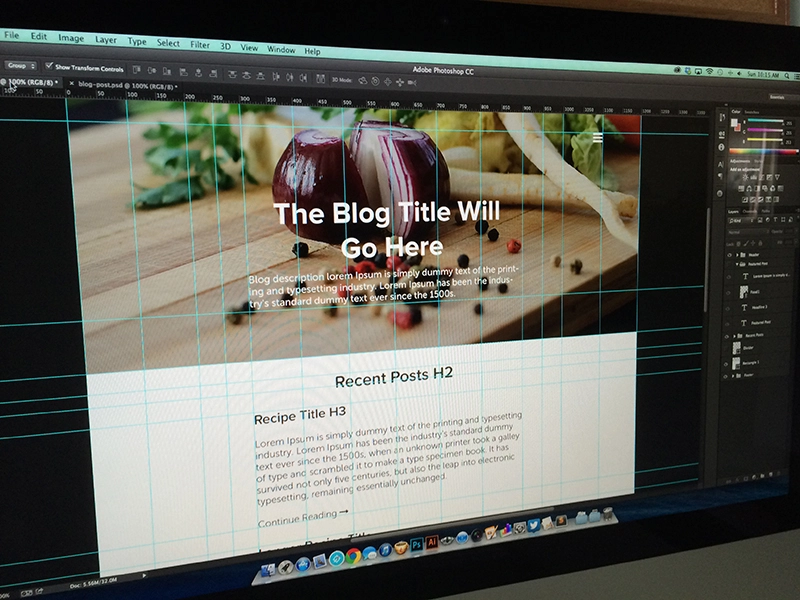
Image Source: dribbble/Brett Smith
This is an example of a food blog mockup design. Mockups are simply created to communicate the basic design ideas shortlisted by the designer with the client to make sure that they are on the right track and the client is on the same page with them. The client is supposed to provide feedback on these mockups and the designer will implement the feedback to create the final product which they are aiming for.
Receiving Client Feedback
This is an important element of the duties performed by the designer. Without the client’s feedback on the mockup, a designer cannot proceed with their work and it is never recommended to skip this part of the process. To avoid wasting time and energy investing in creating a final design and getting it rejected by the client, designers should get the client’s feedback on the mockup and be open to any criticism given by them.
Designers try to strike a balance between the client’s ideas and the designer’s vision related to the project to make sure that creativity is not compromised. This requires some back-and-forth communication between the designer and client and can take up some chunk of the designer’s day but it is all worth it in the end when they come up with a definite solution together.
Final Design Creation
A full-fledged, polished website, logo, brochure, or app design is created with a lot of effort and time. This constitutes most of a designer’s day as they work on creating their final product for hours each day and need to make sure that it is exactly how they want it to be.
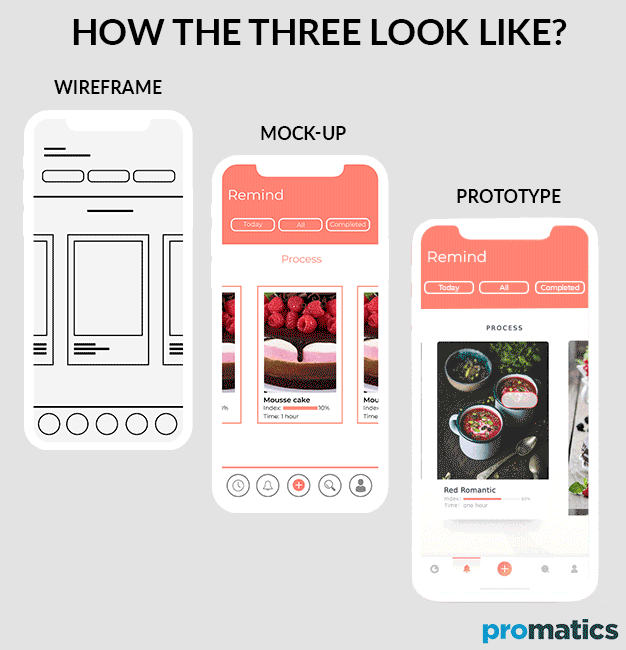
Image Source: appsexpert.medium.com
This image shows how a designer starts by creating a wireframe which is then, used to create a mockup. Then, the approved mockup is used to create a prototype of the final product.
They are careful that the final product meets the goals which are presented in the client brief, is compelling enough to attract the target audience, and is unique enough to make an impact. The designer waits for the client’s approval after the design has been created to proceed with its production.
Collaborating For Production
The graphic designer cannot complete the entire process on his own and at this step, they need the help of a web developer to assist them in production. Firstly, they package their final design in the form that it is supposed to be delivered whether that is digital or print.
Then, they align the necessary elements as well as the size and resolution of their design with the instructions given in the brief to avoid any issues. Finally, the web developer helps the designer makes the designs function as intended by checking for any bugs or errors and completing the process smoothly.
Weekly Design Meetings
Even though these meetings do not take place daily, they are an important part of a designer’s weekly schedule. These meetings are attended by graphic designers to brainstorm design ideas, plan upcoming events and update the team on their work. They can also get feedback on their work from the internal team before it is sent out to the clients during these meetings.
Weekly design meetings are made productive by implementing an agenda:
- Going through important tasks and company priorities at the start of the meeting.
- Sharing the latest research results done by all the designers on the team during the week.
- Sharing random design tips that each designer may have.
- Discussing an important topic such as organizing the style guide for the company’s profile or suggestions for improving presentation skills.
- Finalizing an action plan to implement changes discussed in the meeting and allocating tasks with clear deadlines to each person in the meeting.
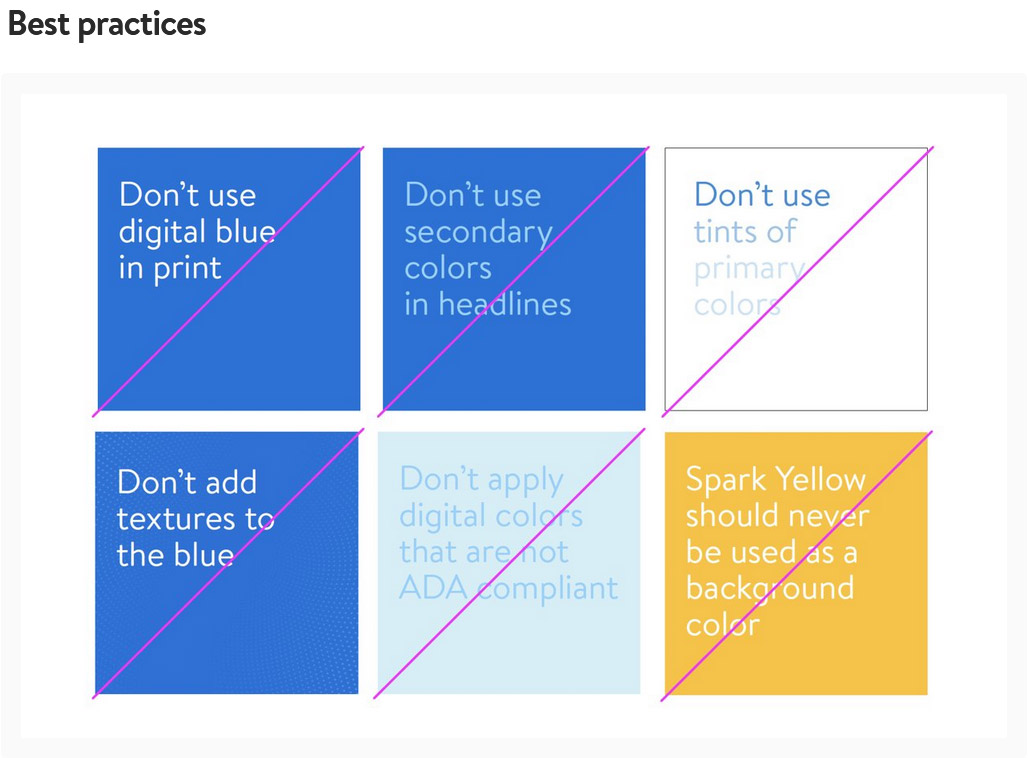
Image Source: walmartbrandcenter.lingoapp.com
Take a look at the example of the style guide of Walmart given above. In the agenda or meetings, graphic designers may work on a strategy to follow the guidelines for creating visual elements for digital and print mediums.
Planning The Next Day
Some graphic designers love to stay on top of their game. They make sure that they never miss deadlines or fall behind in their projects due to poor planning.They like to have a short but highly productive planning session each day.
They log in all their meetings for the next day in their Google Calendar and also prepare a to-do list of the tasks they need to perform the next day. If the designer is stuck on something or waiting for feedback, they like to prioritize chasing up the client for an immediate response so that they don’t waste any workday.
Wrapping Up
The daily tasks and responsibilities may differ for every graphic designer. Every single day may not look the same for one graphic designer either. However, there are certain elements of the job description of a person in this field that remains the same no matter where you work. These points have been highlighted in this blog.
They help you understand how varied and diverse the work of a designer is. They do not simply create websites or work on banners but every day you will find them working on something else and using their creativity to come up with something new. It is a job well-suited for anyone who is enthusiastic, passionate, and creative and loves to play with digital and print designs but can also work according to client’s instructions and deliver effectively what they are asked to create.


